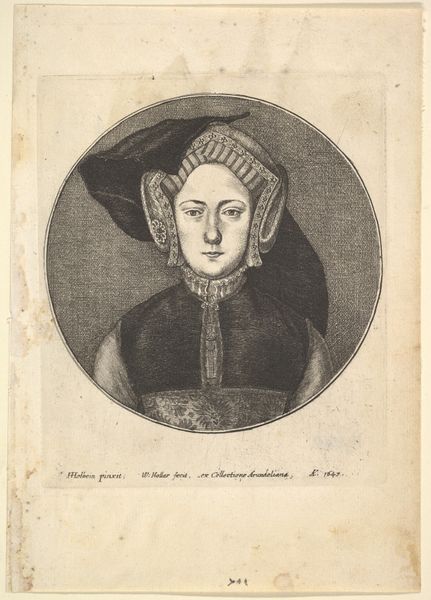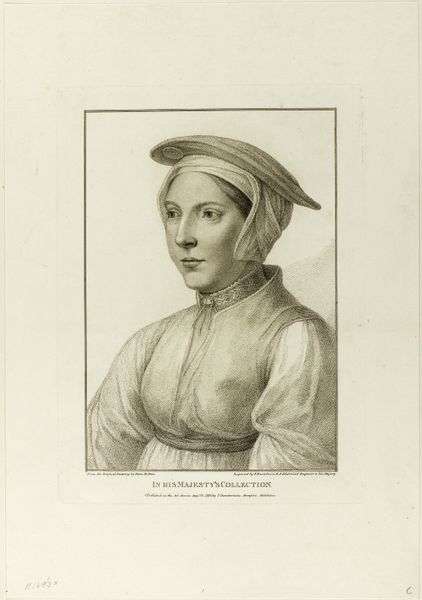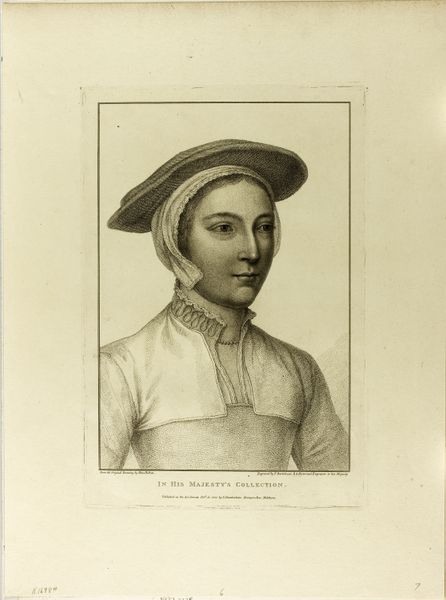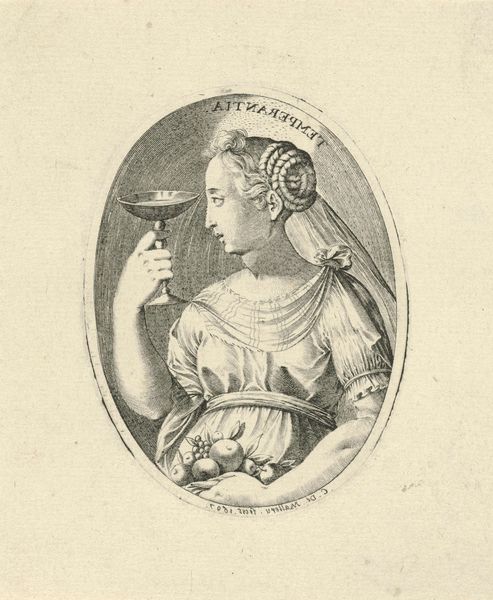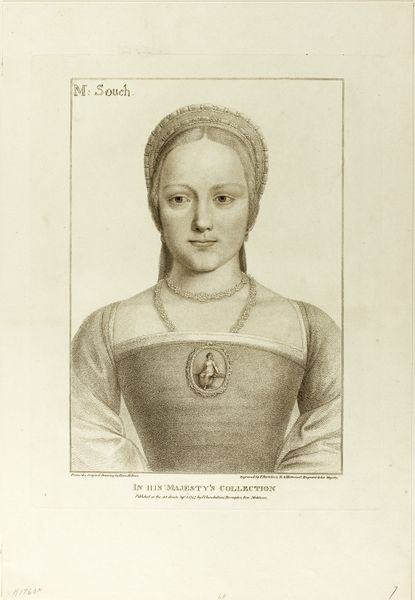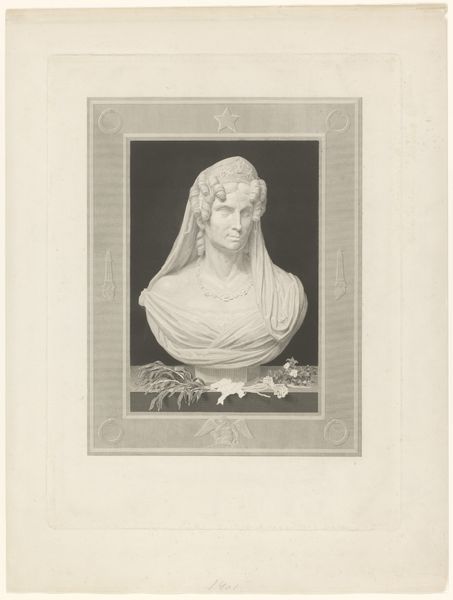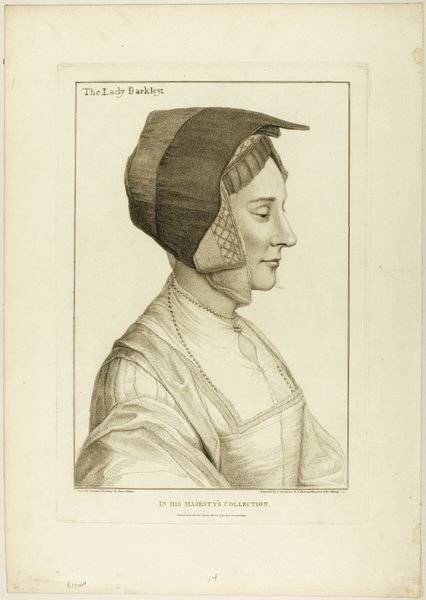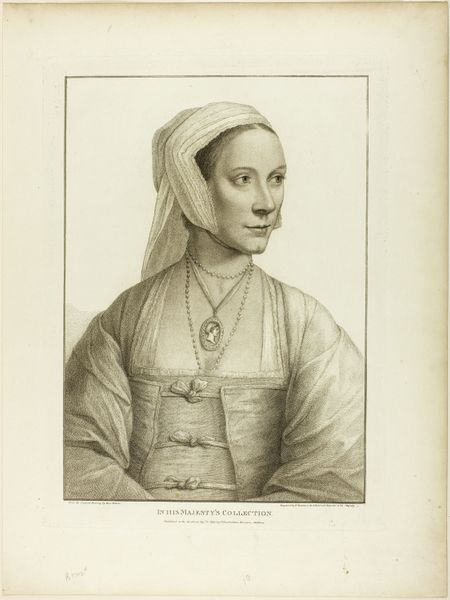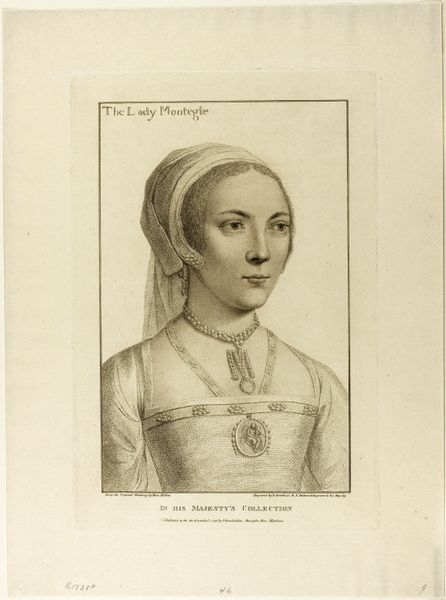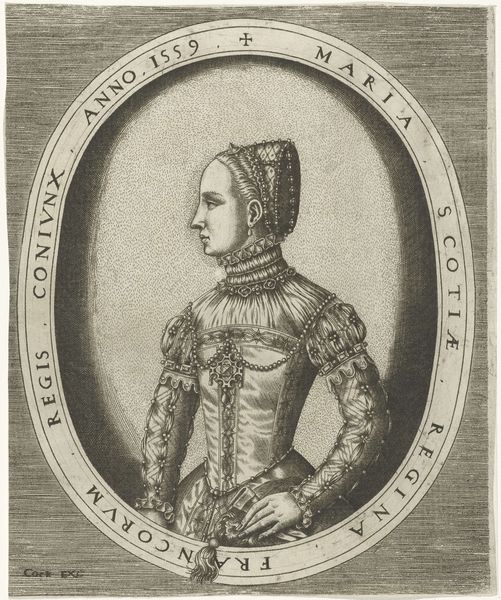
drawing, print, paper, engraving
#
portrait
#
drawing
# print
#
paper
#
portrait drawing
#
engraving
Dimensions: 286 × 197 mm (image); 330 × 241 mm (plate); 470 × 333 mm (sheet)
Copyright: Public Domain
Editor: This is Francesco Bartolozzi's "Portrait of a Woman," created around 1799. It's a drawing and print, mostly on paper, and currently residing at The Art Institute of Chicago. There’s something so strikingly… reserved about her expression. It feels like looking back at a different time, through a veil of formality. How do you interpret this work? Curator: Oh, she has stories to tell, I am certain! But yes, "reserved" is a fine start, don't you think? But it’s all there in the engraving's detail, isn't it? The soft rendering, for instance. Almost a longing in her eyes. See how Bartolozzi captures her finery – the jewelry, the fabric... they seem to soften her austere gaze, giving us just a touch of humanity amidst, perhaps, rigid social constraints of her era? Or what do you imagine? Editor: That’s an interesting point; it does seem that the materials almost undermine the sense of austerity in the subject's pose. Almost as if they wanted the world to know her social class? I hadn't really considered it that way. How much do you think Bartolozzi was adding his own interpretation into her persona? Curator: Ah, a crucial question, isn't it? Did he emphasize the details to reveal something about *her*, or about the culture she inhabited, or simply to celebrate the technical skills required to achieve such delicate artistry, especially in reproductive prints such as these? Did you notice the stippling and how that helps soften what would otherwise be a severe portrait? Ultimately, all portraits are a negotiation, aren't they, a shared construction, between artist, sitter, and the society looking on... and now even *us* looking back at them! Editor: So interesting to consider all those angles, not just as a portrayal of an individual but as a snapshot of the artist's intention, and how society looked at individuals. Food for thought!
Comments
No comments
Be the first to comment and join the conversation on the ultimate creative platform.

